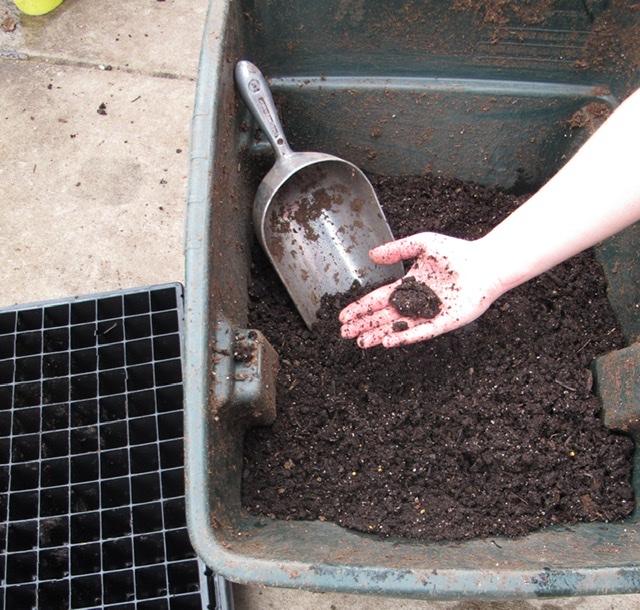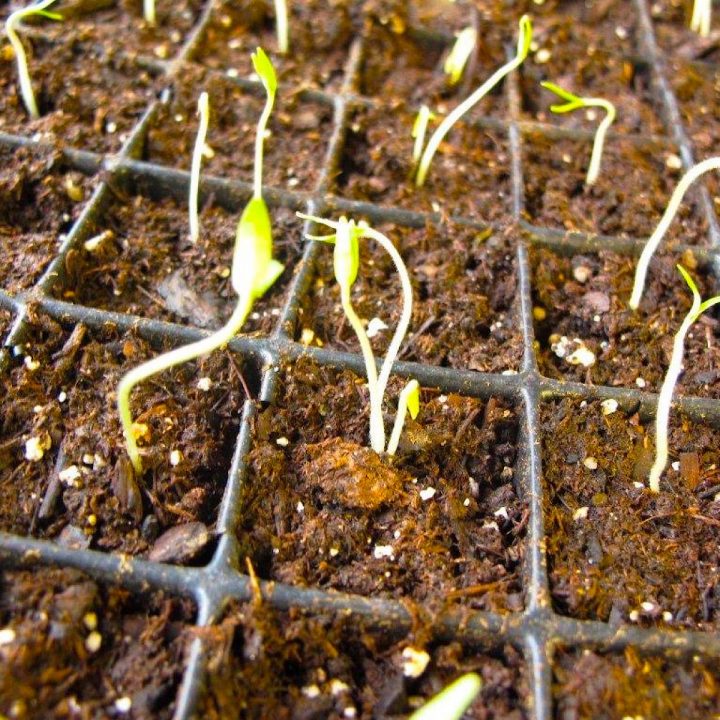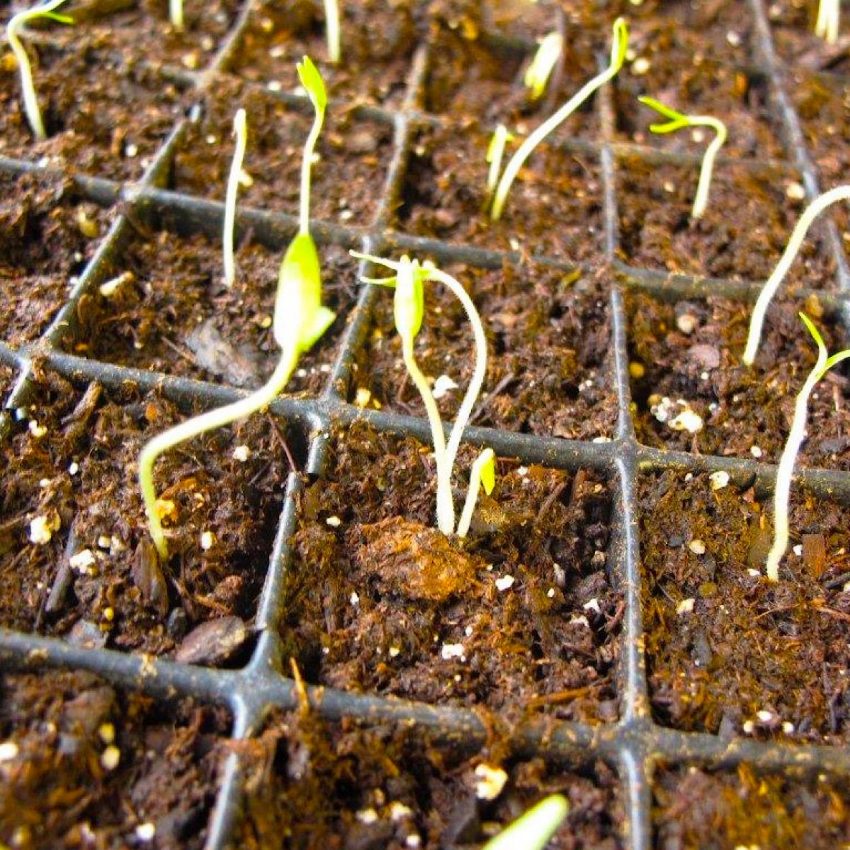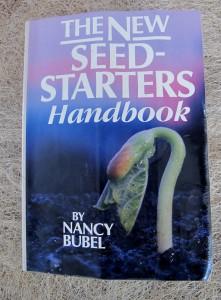Although there are many factors to consider in growing healthy tomato plants from seed, getting the seeds to germinate in the first place can sometimes be tricky. After 20 years of growing peppers and tomatoes for market, I’d like to share a few tips that have helped influence germination success, especially with respect to heirloom tomato and chile pepper seeds.
Jump to: Seed Shelf Life & Viability Factors | Keys to Planting Seeds Indoors | Speeding up Germination
This post may contain affiliate links, and you can read our disclosure information here–
1) Seed Viability Factors Relative to Germination:
- Shelf life: Tomato seeds tend to last much longer in storage than most other seed (i.e., onions need to be purchased fresh every year). Just make sure they were stored properly (cool & dry) and you should have around a 4-5 year shelf life for tomato seeds. Pepper seeds are considered by most growers to have a 2-3 year shelf life. Fedco seed company puts out an informative chart on the longevity of seeds which includes estimates of shelf life for a wide range of vegetable seeds.
- Storage: Humidity shortens the life of saved seeds more than any other aspect. Make sure seeds have wintered over in a cool and dry environment (such as in a tightly sealed jar in the refrigerator or freezer). Dry storage at less than 65 degrees F is recommended for good germination results.
- Vigor: A number of online gardening sites explain how to test a few of your seeds for germination before planting. Just be aware that even if your older tomato seeds germinate, if they are too old or shriveled they may have a scant supply of food stored in their endosperm and the plants may end up weak and/or stunted.
2) Keys to Planting Seeds Indoors
How to Plant in Potting Soil
- Potting soil can sometimes be fluffy with air, but seeds need to make good contact with the soil in order to germinate. Moisten your potting soil before placing it in the flat or container, drop the flat on the ground from a few inches above the floor to settle the soil into the container cells, and then make sure your seed makes direct contact with the soil. I use a #2 pencil to lightly push the seed into the cell and then use the pencil to push a bit of soil over the seed with enough pressure to make sure it securely covered
- Very fine seeds do not need to be covered, just press them lightly into the soil. A few seed types need light for germination (check your seed packages for which ones), but tomato seeds should be covered.
- General rule of thumb is to cover seed to a depth of three times their size.

How Much to Water:
- Water must be available to the seeds in order for them to germinate, but some air must also reach the seed for it to absorb the oxygen it needs. I mix my potting soil with very hot water until it is damp but not soaking wet. A good test is to squeeze a fistful of your moistened soil, checking to see if only a few drops of water squeeze out rather than a stream.
- Check your flats daily to make sure they have not completely dried out. If they become too dry, moisten them gently with a spray bottle. Peppers, in particular, do not like to germinate in wet soil.
How Much Light is Required?
Heirloom tomato seeds and chile pepper seeds do not require light to germinate. In fact they do need to be covered with a bit of soil, and it is important to gently press the soil on top of them to make contact. The moist soil making contact with the seed is what stimulates germination.
Some of your seeds will germinate before others, so I usually put them under the grow lights when about 75% of the tray has germinated. Those that have not come up yet will be close behind and you don’t want the new seedlings to get leggy.
The lights can be on for 16 hours but it is good to give the new seedlings a rest also. I have found that th sweet spot is 16 hours under the lights and 8 hours in dark.
Robert Pirsig, author of Zen and the Art of Motorcycle Maintenance, observed that people need periods of doing nothing like plants need periods of darkness. “If a plant gets nothing but sunlight,” Pirsig said, “it’s very harmful. It has to have darkness too. In the sunlight, it converts carbon dioxide to oxygen, but in the darkness, it takes the oxygen and converts it back into carbon dioxide. People are like that too. We have to have some periods of doing and some periods of non-doing.”
Timing & Temperature:
- The length of time it takes for your seeds to germinate is heavily related to soil temperature. Tomato seeds should germinate within 5-6 days if you can keep the soil temperature around 80º F. Peppers take a little longer with a little higher temperature (7-8 days at 85º F). Remember this is soil temperature, not ambient temperature.
- Speeding things along: I usually get germination earlier than the standard charts predict by placing bottom heat under my flats using 100-watt light bulbs (see seed-starting setup for details).
Preventing disease following seed germination
Young seedlings are quite fragile in the weeks after germinating. This is when they are susceptible to root rot and getting leggy. You can check here for tips for preventing disease in tomato and pepper plants following seed germination.
Tips for Speeding up Germination
Using Bottom Heat for Seed Starting:
- The length of time it takes for your seeds to germinate is heavily related to soil temperature. Tomato seeds should germinate within 4-6 days if you can keep the soil temperature around 80º F. Peppers take a little longer with a little higher temperature (7-8 days at 85º F). Remember this is soil temperature, not ambient temperature.
- Speeding things along: I usually get germination earlier than the standard charts predict by placing bottom heat under my flats using 100-watt light bulbs (see this post for my seed-starting setup).

Special Techniques for Particular Seeds
- Pre-soaking seeds: Tomato and pepper seeds don’t need to be soaked prior to planting. Some seeds with a hard shell do benefit from pre-soaking however. I always pre-soak parsley, sweet peas and nasturtium seeds overnight in warm water and find it speeds up their germination considerably.
- Scarifying seeds: This refers to the process of literally damaging the seed coat, usually by scratching the seed with sandpaper and then soaking in water. Some seeds (i.e., woody plants in the legume family) are so hard and well protected by their seed coat that the seedling is not able to break through it on its own. Tomato and pepper seeds do not need scarifying, but some of the larger seeds with hard seed coats would benefit from this.
I have been starting tomato and pepper seeds for market now since 1998. The book that I found to be most useful throughout my adventure is The New Seed Starter’s Handbook, by Nancy Bubel.
This book is research-oriented, comprehensive, and provides the scientific rationale behind each method she promotes. For more thorough information on the tips offered in this post, I would highly recommend Nancy Bubel’s book.
Comprehensive Guides for Indoor Seed Starting
There are two other posts on this site that cover seed germination with more details:
Details for Growing Heirloom Tomatoes
- For germinating seed indoors
- Hardening off tomato plants before planting outside
- Growing tomatoes in pots
- Best seed catalogs for tomatoes
- Best trellis systems for tomatoes
- Season extension for tomatoes
- Taste of heirloom tomatoes based on color
If you like my articles about cooking and gardening, subscribe to my weekly newsletter, where I share free recipes and gardening tutorials.




I love this time of the year. Spring has to be just around the corner. My problem has always been when starting seeds indoors is they grow long and spindly. I even have the book you suggest but I must just keep doing something wrong (obviously). Any thoughts?
Hi Jim, Usually when the plants grow long and spindly it is because the light source is not close enough or strong enough (i.e., starting in a windowsill). Florescent lights situated just an inch or so above the seedling is what you need, and then keep raising the lights as the plant grows. Also, don’t be too eager to start tomato seedlings. I start peppers around the end of February, but I don’t start the tomatoes until mid-March. Even if it feels like spring, seedlings won’t like sitting in a small pot with no sun for that long.
The last thing I would suggest for vigorous plants is to keep the evenings cool once the plants are germinated. So, strong, close light in the daytime + cool evenings + no overfertilizing + potting them up into bigger pots when they are around 4″ tall. Hope that helps.
i dont know
Thanks for the advice! I picked up a grow light and will give your advice a try. Have a great spring!
You bet Jim. Good luck!
Hi Dorothy
I enjoyed the article. I’ve often wondered how long tomato seeds last when stored.
I would be interested in how many seeds you germinate and what your germination rate is for soil germination. Also do you use a heated propagator or some other means (bear in mind it’s currenty freezing where I am in the UK).
I also noticed in another article of your articles you mention that Pink Brandywine is not your favourite pink – if you were to grow just one what would it be?
Best regards
Hi Jon, I currently start about 5,000 heirloom tomato seeds in my shop set up and get 99% germination rate (I am much smaller than you it looks like, so I hand seed). I heat the underneath of the trays with 100-watt light bulbs. You can see my whole set-up with a lot more detailed information if you go to the post titled “How to Start Heirloom Tomato and Pepper Seeds for Best Germination” (also found under the older title which is: “Best Practices for starting tomato and pepper seeds at home”). My favorite large pink tomatoes are currently Caspian Pink (tastes like Brandywine but earlier and higher yield) and Mortgage Lifter (aka Radiator Charlie). Thanks for your comment!
Thanks Dorothy I appreciate your speedy feedback. Will check out the article you suggested.
I found a method of getting at least 10 to 15 percent of seeds to germinate AFTER you have tried all these tricks. I have never see this tip mentioned in any websites or discussion formums. I’ll trade this tip for a copy of the book.
Terry, That book is just one I recommend to my readers as something that has been useful for me. I am not an affiliate and don’t have any connection to the author. Feel free to share tips with everyone, but I have nothing to trade for it. My information for readers is all just sharing what I know for free.
I bought a new seedling heat mat. It fits 5 seedling trays sitting across the mat. I planted pepper – including habanero – tomatoes, eggplants, brussel sprouts, and broccoli. After 4-5 days – I had sprouting in tomatoes, brussel sprouts and eggplant, but only along the outer edges of the mat. So I have trays with each end of the tray having sprouted, but everything towards the center of the tray/mat has not sprouted yet. Now it has been approaching 10 days, and still only things along the edges have sprouted. I am just assuming the mat is too hot. I have placed some standing water in the solid bottom tray beneath the soil tray, and now I have placed a slotted carrying tray beneath that. Is it too late? When should I think of starting over….
None of my pepper seeds have started yet, but I have heard that hot peppers take a very long time – I had also soaked my pepper seeds in salt peter for 20 hrs.- but I also have sweet peppers and those haven’t started either………..
I have kept the grow room at about 68-70F and it says the mat can raise the temp by 20F
It can get too hot on those mats, certainly in the middle.
I raise mine off the mat about 1/2″ so it does not get full heat, only use a single size heating pad.
You should probably invest in the thermostat for the heating mat, only about 20 bucks.
My 48″ heat mat actually gets so hot that it cooks seeds in the center! I’ve unfortunately had that experience. Your best best is to USE THE MAT, but use chopsticks or something to hold your seed containers (or better yet, put containers in a big tray like the “oil drip pans” that Wal-mart sells… or a big tub) off the heating mat. The heat mat does a good job of heating the air in the thin layer under the heat mat… this will make your seed environment appropriately warmed for germination.
Joe – over the years I have had the exact problem that you are experiencing. I have an instant read food thermometer and when I put it in the middle cells of sprouting trays it registered 125!! I had a large heat mat under the tray with a T5 grow light above. These were placed in my home office and so got way way too hot. I had to start over and put many pieces of cardboard between the heat mat and the sprouting tray.
Hi Joe, I have not used heat mats before so I’m not exactly sure what is happening. Peppers do take longer to germinated but not that long. My peppers all germinated this year withing 5-6 days, but I keep the germinating room warm (around 75 degrees) and I keep the soil pretty dry and they are in very small plug trays. I’m wondering if the soaking the seeds and then keeping them in moist soil has caused a problem. I’ve found they do not like to be too wet and they seem to germinated best when the soil is quite dry (and warm). 10 days is quite a while. I think you may have to start over. You can pop one out of the plug and spread out the soil on the counter and see if you can find the seed. If you find a seed and it has a little green sprout coming out, then you know they are just germinating slowly but they will germinate eventually. If the seed does not have a sprout after this long, they’re not going to germinate.
I live in Miami florida when should I start tomatoes and peppers
Sorry Pedro, I have no idea about that part of the country.
Dorothy, thank you for your terrific advice – I’ll put it to good use here in Ohio for tomatoes and peppers. I’m wondering if you or anyone knows if it is possible to start tomato/pepper seeds indoors in rockwool (to control fungus knats) and then later transplant them outside in garden soil. I grow seeds for many people indoors and would like a way to control the knats, but these plants will eventually go outside in regular soil. Thanks for any advice! – Angie
I’m sorry Angie, I have no idea on this one!
Yes Angie u can go from Rockwell to soil. I would recommend reading an article online by googling fatali seed company, he has excellent information on this subject in particular!! I to have used Rockwell for my peppers, I have some indoors freshly sprouted in Rockwell rt now!! Mostly super hots (chocolate bhut,Carolina reapers, habaneros
and toabascos!!
Hi Dorothy : Myself and the entire second grade class of one of our local schools will be starting the seedlings
for snack peppers ( Lunchbox Peppers ) at the end of February, we have the self watering seedling
starter plugs, heat mats and grow lights. Is it correct that we must transplant the seedlings into bigger
pots when they are around 4″ tall ? If so, how tall must the plants be for us to transplant them from
the 4″ pots into our 3 1/2 gallon buckets ? Thnx
You don’t absolutely have to transplant them from plug to a 4″ pot. You could go straight from plug to the bucket, just know that they will grow and you don’t want to overcrowd the bucket.
Which soil or which type of soil need to germinate the seeds
Sterilized potting soil is all you need.
I am growing onions from onions I bought that started growing green sprouts. How long does it take for the sprouts to grow
can i use a heater or lamp for my seeds?
When your plants get 4″ high and are ready to be moved to bigger pots what type of soil should be used?
Have you planted Bradley tomatoes? If so do you have any tips you find useful? They are our favorite tomatoe and first year starting from seed. Thank you for all your advice and kind words!
God Bless!
Any advice for a newbie on the scene, bearing in mind that I’m in Australia, the seasons are back to front to the rest of the world. But we do have plenty of sunshine all the year round. It is now winter and I’m going to try growing my tomatoes on the window sill in my kitchen, similar to a hot house!! A lot of my veggies get eaten by possums, koalas etc. Im looking forward to starting my own tomato and capsicum (peppers) . I’m not very confident , so look forward to any advice. Thank you so much.